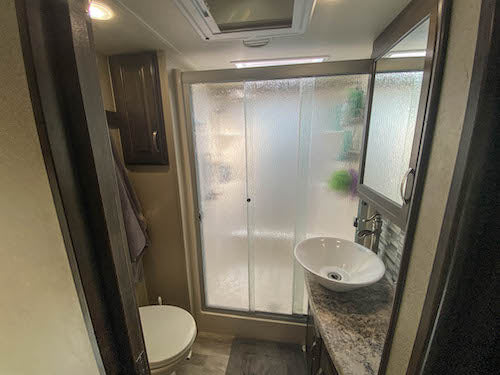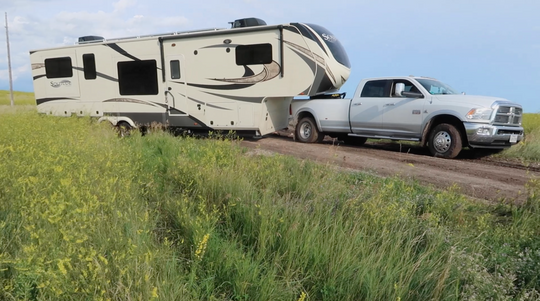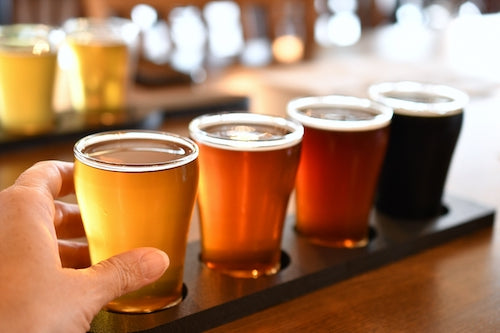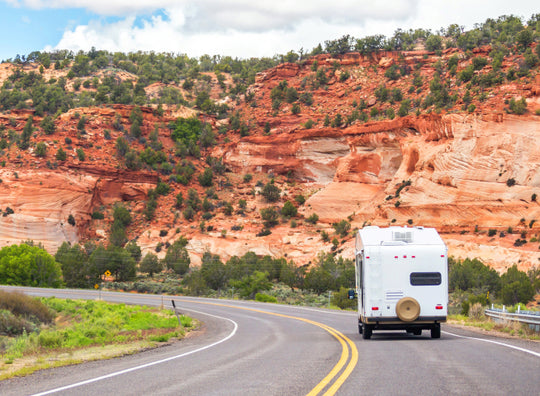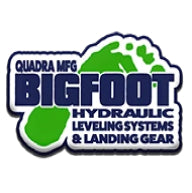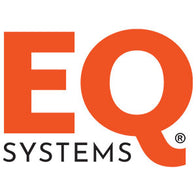Article Content
Written by the Getaway Couple Rae & Jason
We believe one of the most incredible benefits of traveling in an RV is having many of the comforts of home along with you. Being able to camp in the desert, forest, or on a beach untethered to campground hookups but still have the luxury of plumbing is pretty amazing. A clean, well-maintained fresh water system is essential to drinking, cooking, and bathing with safe, clean water. So let’s have a look at the all-important matter of how to sanitize an RV fresh water system!
How Often Should You Sanitize Your Fresh Water System?
It’s a good idea to sanitize your fresh water system every six months to ensure that the fresh water holding tank and the plumbing lines are free of any harmful bacteria or mold growth. Factors such as heat and stagnancy can contribute to undesirable and dangerous build-up in your holding tank.
If you store your RV or don’t use it for long periods, it’s a good idea to sanitize the fresh water system before using the RV. A partially empty tank and unused plumbing lines can be breeding grounds for mold and bacteria.
Items You Need to Sanitize Your RV Fresh Water Holding Tank and System
You only need a few easy-to-obtain items to sanitize your fresh water system and a little bit of time. Here are the things you’ll want to have on hand:
Gloves
It’s always good to wear a pair of nitrile gloves when working with the next item on our list, household bleach. Bleach can be caustic to the skin, so exercise caution when dealing with it.
Chlorine Bleach
Bleach is an excellent disinfectant and sanitizing agent to clean your RV’s fresh water system thoroughly.

Bucket or Pitcher
You’ll want to have a bucket or an old pitcher on hand to dilute the bleach in some water before adding it to your RV’s fresh water system.
Measuring Cup
It’s essential to measure the amount of bleach you’ll be adding to your fresh water system so that you’ll have the correct bleach to water ratio that will sanitize the system without harming plumbing.

A Fresh Water Supply
Finally, you’ll need access to a fresh water supply.
How To Calculate How Much Bleach You Need
You’ll need to calculate the amount of bleach you need to use based on the size of your fresh water tank. The rule of thumb is that we use ¼ cup of bleach for every 15 gallons of water.
Since you’ll only be filling your fresh water tank for this process, you’ll need to know the total capacity of your fresh water tank for this calculation.
We have a 100 gallon fresh water tank and we like to add a little extra since we turn on our faucets to get the bleach mixture in the lines as well. So for us, to calculate how much bleach we need, we’ll be adding bleach to about 105 gallons of water. Using ¼ for every 15 gallons of water means that we will use 1 ¾ cup of bleach.
Caution: Don’t Add Bleach First
Never add bleach directly to your drains or tank. Concentrated bleach can damage your holding tank and your RV plumbing. Be sure to dilute the bleach in at least a gallon of water using your pitcher or bucket. Then add the diluted bleach/water mixture to your tank.
How To Sanitize Your Fresh Water System
Now we’re ready to sanitize your fresh water system. Let’s get to it!
Turn Off, Drain and Bypass Your Water Heater
First, make sure your water heater is off and that the water in your hot water tank is not hot. You can do this by turning off your hot water heater the night before you plan to sanitize your fresh water holding tank so it has time to cool. Or, if the water is hot, you can turn off your hot water heater and run your faucets until all of the hot water is out of the tank.
Either way, once you have confirmed your water heater does not have hot water in it, it’s time to drain it. You don’t want the water heater to be under pressure, so flip the pressure valve before draining!
Drain your water heater and replace the plug. Then, close the appropriate valves to bypass your water heater just as you do during your winterization procedure. You don’t want or need to add bleach to the water heater.

Drain Fresh Water System
Next, drain your fresh water system. You may wish to consult your owner’s manual if you’re unsure how to do this, but it simply involves opening the water valves for the fresh water tank and the water lines.
Add Bleach Water Mixture to Fresh Water Tank
You can add your bleach mixture to the fresh water tank either using a winterization kit or simply adding the mixture directly to the tank fill using a funnel. We have the Nautilus P1 Panel on our Grand Design RV, which comes with a function to siphon from a hose directly to the fresh water tank, which is how we get our bleach mixture in it.


Fill Tank with Potable Water
Fill your fresh water tank completely. You’ll know the tank is full when water begins running out of the overflow tube under your RV.
Turn on All Faucets Until You Smell the Bleach Water
Now step into your RV and turn on all the water faucets until you can smell the bleach. Run your shower briefly as well, and don’t forget your outdoor shower if you have one. Doing this ensures that the sanitizing mixture has reached every pipe, faucet, and showerhead in your RV.
Let It Sit
Now allow the sanitizing mixture to sit for up to 12 hours. Personally, we like to add the mixture in the evening and drain the tank in the morning. We make sure to have some drinking water on hand as well. That way, we aren’t inconvenienced by not being able to use the water when waiting for the mixture to sit.
Drain And Flush with Fresh Water
Once the mixture has soaked in the tank and the plumbing system, drain the system again.
Once the system has been completely drained, flush the system with fresh water. To do this, add fresh water to the tank and run it through the entire system, remembering to include your indoor shower and your outdoor shower if your RV has one.

Turn Off the Bypass to the Water Heater
Turn off the bypass to your water heater so that you’ll be able to refill and use your water heater.
Conclusion
You have now sanitized your fresh water system! Your tank and plumbing lines are clean and ready to carry truly fresh water to your drinking glass, your cooking pot, your coffee maker, your dishpan, and your shower. Again, be sure to complete this task every six months to ensure you and your family have clean, safe water when camping.

